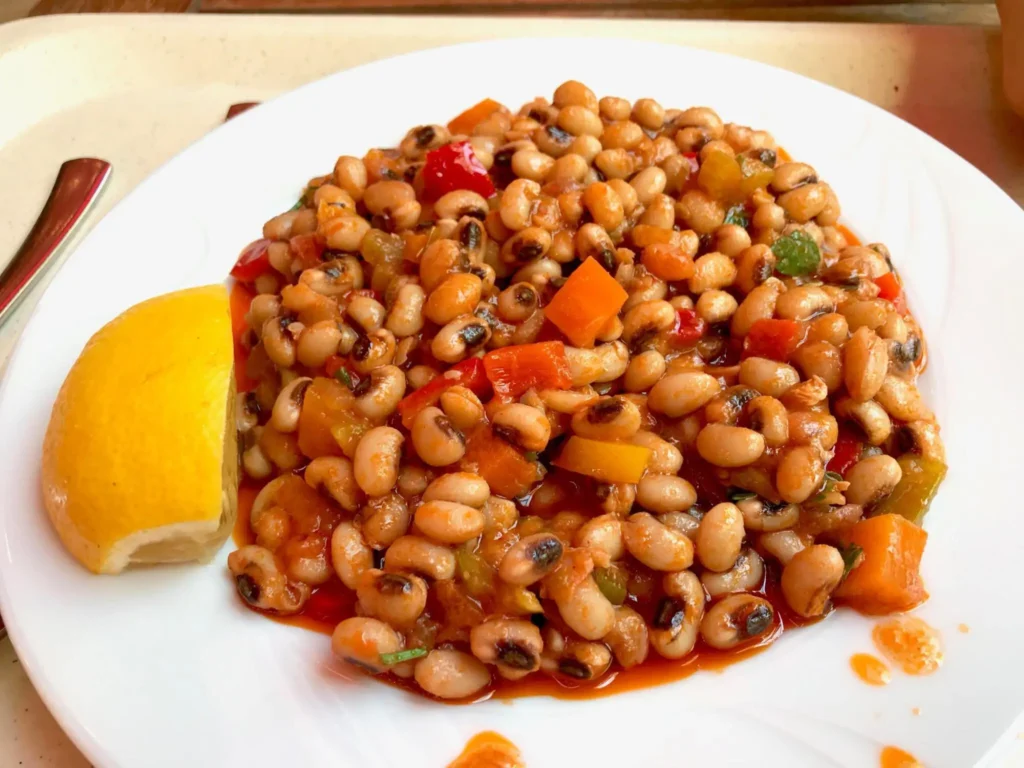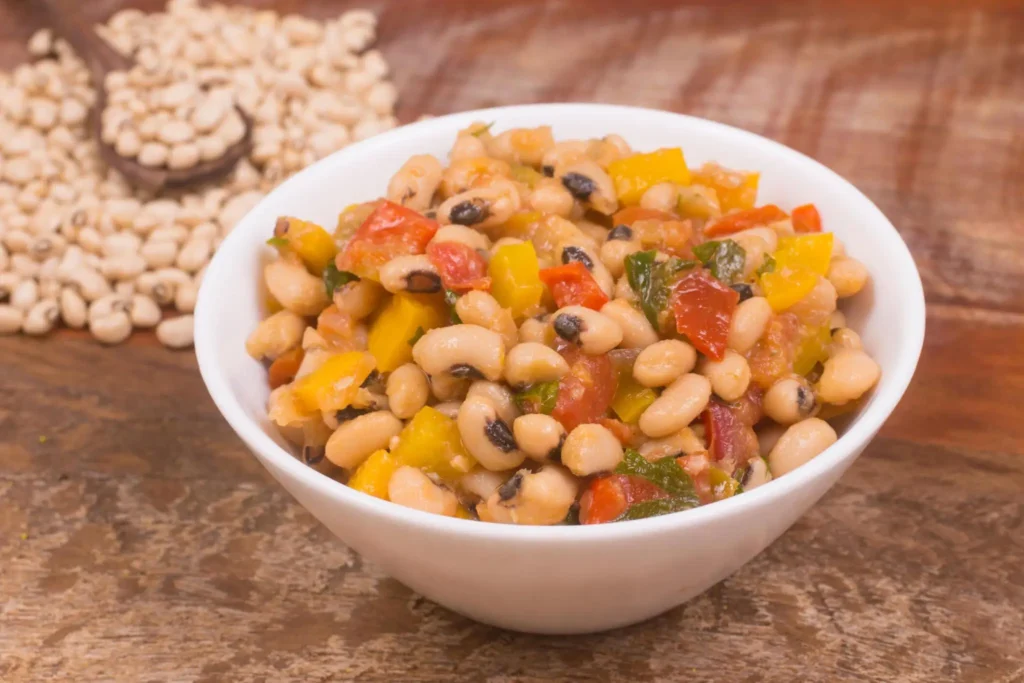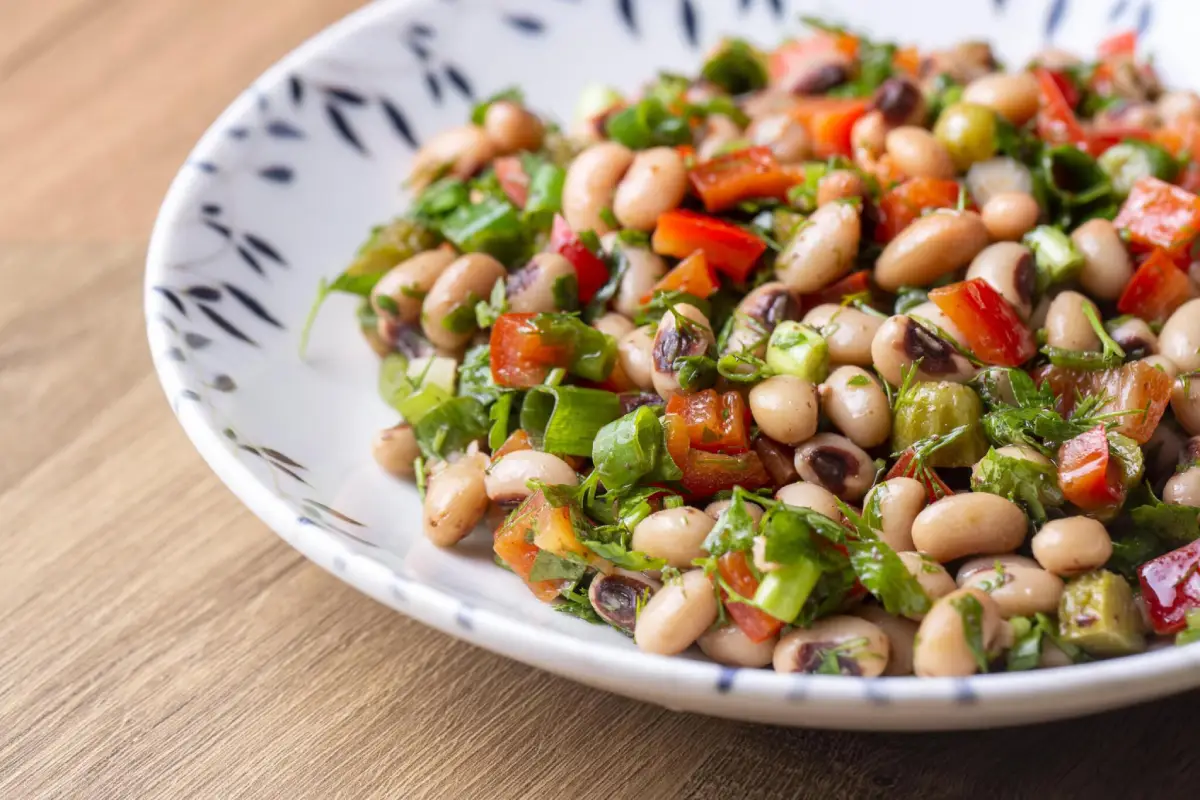Black-eyed peas, a humble yet mighty legume, hold a place of honor in culinary traditions around the world. Renowned not only for their distinctive flavor but also for their symbolic representation of luck and prosperity, these peas are a staple in various cuisines. However, the real magic of black-eyed peas seasoning lies not just in their taste or symbolism but in how they’re seasoned. Seasoning can elevate the simple black-eyed pea into a culinary masterpiece, intertwining flavors and cultures. In this guide, we’ll embark on a flavorful journey, exploring how to season up black-eyed peas to perfection. From the essential spices to innovative recipes, we’ve got all the tips and tricks you need to make your next dish unforgettable. Let’s dive in and unlock the full potential of these versatile peas.
Understanding Black-Eyed Peas
Before we delve into the art of seasoning, let’s get to know our star ingredient a bit better. Black-eyed peas are more than just an ingredient; they’re a nutritional powerhouse and a cultural icon.
Nutritional Benefits
Black-eyed peas are lauded for their health benefits. Rich in protein, fiber, and essential nutrients like potassium and iron, they’re a fantastic addition to any diet. Incorporating black-eyed peas into meals can boost your nutritional intake while satisfying your hunger. For more details on their nutritional benefits, ChooseMyPlate.gov offers a wealth of information on incorporating such nutritious legumes into your meals.
Choosing the Right Peas
The foundation of a great dish begins with selecting the right ingredients. When it comes to black-eyed peas, you have the choice between fresh, dried, and canned options. Fresh peas are seasonal and offer a sweet, earthy flavor, while dried peas are available year-round and provide a more concentrated taste. Canned peas are convenient but watch out for added sodium. Regardless of your choice, ensure the peas are of good quality to set the stage for a flavorful dish.
Understanding black-eyed peas’ nutritional value and knowing how to select the best ones are crucial first steps. With this foundation, we’re ready to explore the myriad ways to season and prepare them, ensuring every dish is not only nutritious but also bursting with flavor.
Preparing Your Peas for Seasoning

Preparing black-eyed peas properly is essential to maximize flavor absorption and achieve the perfect texture. Whether you’re starting with dried peas or opting for a quicker canned option, the prep work is crucial for a delicious outcome.
Soaking and Cooking Techniques
For those using dried black-eyed peas, soaking is the first critical step. Soaking not only shortens cooking time but also aids in digestibility. You can opt for a quick soak, boiling them for a few minutes then letting them sit for an hour, or the traditional overnight soak. After soaking, rinse the peas thoroughly before cooking to remove any impurities.
When it comes to cooking, you have options. Simmering on the stove is traditional and allows for easy flavor adjustments. For a hands-off approach, a slow cooker or pressure cooker can be incredibly convenient, especially for those busy days. Regardless of the method, ensure there’s enough liquid to cover the peas and cook them until tender but not mushy, typically about an hour on the stove on medium heat.
Achieving the Perfect Texture
The goal is to have peas that are tender and creamy without disintegrating into the broth. The key to this is gentle cooking and avoiding over-stirring, which can break the peas. If your peas are too firm, simply extend the cooking time, checking every 10-15 minutes until they reach your desired tenderness. On the other hand, if they’re too soft, you might have a fantastic base for a hearty soup or puree!
Preparing your black-eyed peas correctly sets the stage for a dish that’s flavorful and satisfying. By paying attention to the soaking and cooking process, you can ensure your peas are perfectly prepped for seasoning, ready to absorb all the delicious flavors you’ll add next.
Mastering the Art of Seasoning
Seasoning is where black-eyed peas truly come to life, transforming from a humble legume into a dish bursting with flavor. The right blend of spices, herbs, and extras can elevate your black-eyed peas, making them the star of any meal.
Essential Spices and Herbs
The foundation of any good seasoning blend for black-eyed peas includes salt and pepper, but the magic lies in how you build on these basics. For a classic Southern flavor, incorporate smoked paprika, garlic powder, and a hint of cayenne for warmth. Herbs like thyme, bay leaves, and sage add depth and complexity, marrying well with the earthy notes of the peas.
Creating Flavorful Combinations
Experimenting with spice combinations can lead to delightful results. Consider the profile of your accompanying dishes and choose spices that complement the overall meal. For a Caribbean twist, mix in allspice, cloves, and a bit of ginger. For a Mediterranean flair, lean on cumin, coriander, and a dash of lemon zest. The key is balance; start with small amounts, tasting and adjusting as you go.
Regional Seasoning Variations
Exploring regional seasoning variations can inspire new takes on black-eyed peas. In West African cuisine, black-eyed peas are often seasoned with scotch bonnet peppers and palm oil, offering a spicy and rich flavor profile. Brazilian recipes might include coriander and lime, giving the dish a fresh and zesty note. Each region brings its unique twist, inviting you to travel the world through your taste buds.
Mastering the art of seasoning black-eyed peas opens up a world of culinary possibilities. By starting with essential spices and herbs, experimenting with combinations, and exploring regional variations, you can create a dish that’s not only nourishing but also a true delight to the senses. Remember, the best seasoning strategy is one that suits your palate, so don’t be afraid to get creative and make the dish your own.
Cooking Methods That Enhance Flavor
Choosing the right cooking method for your seasoned black-eyed peas can significantly impact the dish’s final taste and texture. Whether you’re looking for a slow-simmered richness or a quick, flavor-packed meal, understanding how different techniques affect your peas is key to culinary success.
Slow Cooking vs. Stovetop
Slow Cooking: Ideal for those who love a “set it and forget it” approach, slow cooking black-eyed peas allows the flavors to meld beautifully over time, resulting in a deep, complex taste. This method is perfect for busy days when you want to come home to a warm, ready-to-eat meal. The low, slow heat ensures that every pea is perfectly tender and infused with the seasoning.
Stovetop: For a quicker meal, the stovetop method offers more control over the cooking process. Simmering black-eyed peas on the stove lets you adjust flavors on the fly, adding more seasoning if needed or tweaking the liquid levels. This method is great for cooks who enjoy being more hands-on and tasting as they go. Plus, it usually requires less cooking time than slow cooking, making it suitable for a hearty weeknight dinner.
Incorporating Meats and Vegetables
While black-eyed peas are delicious on their own, adding meats or vegetables can elevate the dish to new heights. Smoked turkey, chicken, or even vegan sausage can add a savory depth, while diced tomatoes, bell peppers, and onions introduce freshness and brightness. When adding these ingredients, consider how their flavors will blend with the peas and seasonings. For the best results, sauté your vegetables or brown your meat before combining them with the peas, enhancing their natural flavors and ensuring a more cohesive dish.
The choice of cooking method and the decision to incorporate additional ingredients significantly influence the final flavor of your black-eyed peas. Whether you opt for the convenience of slow cooking or the immediacy of the stovetop, and whether you keep it simple or add extra layers of flavor with meats and vegetables, the key is to let the seasoning shine through, creating a dish that’s as delicious as it is nourishing.
Innovative Black-Eyed Peas Recipes

Diving into the world of black-eyed peas with a creative mindset opens up a panorama of culinary possibilities. Moving beyond traditional recipes allows these versatile legumes to shine in new and exciting ways. Here are a few innovative dishes to inspire your next kitchen adventure.
Fusion Dishes
In the spirit of culinary exploration, consider blending traditional black-eyed pea recipes with flavors from around the globe. A Black-Eyed Pea Curry merges the comforting texture of these legumes with the aromatic spices of Indian cuisine, offering a hearty and vegan-friendly dish. Alternatively, a Black-Eyed Pea Sushi Roll, incorporating the peas into a sushi rice mixture, presents a unique twist on a Japanese classic, showcasing the peas’ versatility.
Vegetarian and Vegan Options
Black-eyed peas are a boon for vegetarian and vegan cooking, providing a protein-packed base for numerous dishes. A Vegan Black-Eyed Pea Chili leverages the peas’ meaty texture, simmered with tomatoes, corn, and a robust blend of spices for a comforting bowl that satisfies on any chilly evening. Another standout is a Black-Eyed Pea Salad with Roasted Vegetables, offering a lighter option that doesn’t skimp on flavor or substance.
Gourmet Inspirations
Elevating black-eyed peas to gourmet status can be as simple as presenting them in an unexpected way. A Black-Eyed Pea Pâté, seasoned with fresh herbs and aromatics, can serve as a sophisticated spread for artisan bread or crackers. For a truly elegant dish, try a Black-Eyed Pea Risotto, where the peas are slowly cooked with Arborio rice and finished with a drizzle of truffle oil, transforming the humble legume into a luxurious dining experience.
These innovative recipes showcase the adaptability of black-eyed peas, proving that they can transcend traditional boundaries to become the centerpiece of any meal. Whether you’re drawn to fusion dishes, vegetarian and vegan options, or gourmet inspirations, there’s no limit to the creativity you can bring to the table with black-eyed peas.
Related Articles
- How to Jazz Up Black-Eyed Peas: A Creative Cooking Guide
- Exploring The Best Ways to Eat Black-Eyed Peas
Frequently Asked Questions
Navigating the culinary landscape of black-eyed peas, you might find yourself pondering over common queries. Here, we’ll address some frequently asked questions, providing clarity and confidence as you cook.
Can I cook black-eyed peas without soaking them first?
Yes, you can cook black-eyed peas without a pre-soak, but soaking does help to reduce cooking time and make them more digestible. If you’re short on time, a quick soak or simply cooking them a bit longer will suffice. Just remember, unsoaked peas may require more cooking liquid and time.
How can I prevent my black-eyed peas from becoming mushy?
The key to preventing mushy black-eyed peas lies in the cooking time and method. Simmer the peas gently and keep an eye on them, especially as they start to become tender. Avoid overcooking by testing them periodically and removing them from heat once they’ve reached the desired consistency.
Are black-eyed peas good for you?
Absolutely! Black-eyed peas are rich in fiber, protein, and several key vitamins and minerals. They’re a nutritious addition to any diet, contributing to heart health, digestive health, and overall well-being.
How do I store leftover cooked black-eyed peas?
Leftover cooked black-eyed peas can be stored in an airtight container in the refrigerator for up to five days. For longer storage, you can freeze them for up to six months. Ensure they’re cooled before refrigerating or freezing to maintain their texture and flavor.
Addressing these FAQs helps demystify the process of cooking with black-eyed peas, making it more accessible and enjoyable. With these tips in hand, you’re well-equipped to tackle any black-eyed pea dish with confidence.
Conclusion: Celebrating the Versatility of Black-Eyed Peas
As we conclude our journey through the flavorful world of black-eyed peas, it’s clear that these humble legumes are a powerhouse of culinary potential. From their rich cultural heritage and nutritional benefits to the myriad ways they can be seasoned, prepared, and transformed into mouthwatering dishes, black-eyed peas truly deserve a spot in every cook’s repertoire.
Embracing the art of seasoning black-eyed peas opens the door to an array of delicious possibilities. Whether you’re adhering to traditional methods or exploring innovative recipes, the key lies in balancing flavors and textures to suit your palate. Remember, the best dishes come from a place of creativity and passion, so don’t be afraid to experiment and make each recipe your own.
We’ve explored everything from the basics of choosing and preparing black-eyed peas to the intricacies of seasoning and cooking them. We’ve ventured into the realm of fusion cuisine, vegetarian and vegan options, and even gourmet inspirations, all showcasing the versatility of black-eyed peas.
So, the next time you find yourself with a bag of black-eyed peas in your kitchen, remember the endless possibilities that await. Whether you’re aiming to bring good luck for the New Year, seeking to add a nutritious boost to your meals, or simply exploring new flavors and textures, black-eyed peas offer a world of culinary adventures.
Thank you for joining us on this flavorful journey. May your dishes be as nourishing as they are delicious, and may the humble black-eyed pea continue to inspire creativity in kitchens around the world.

